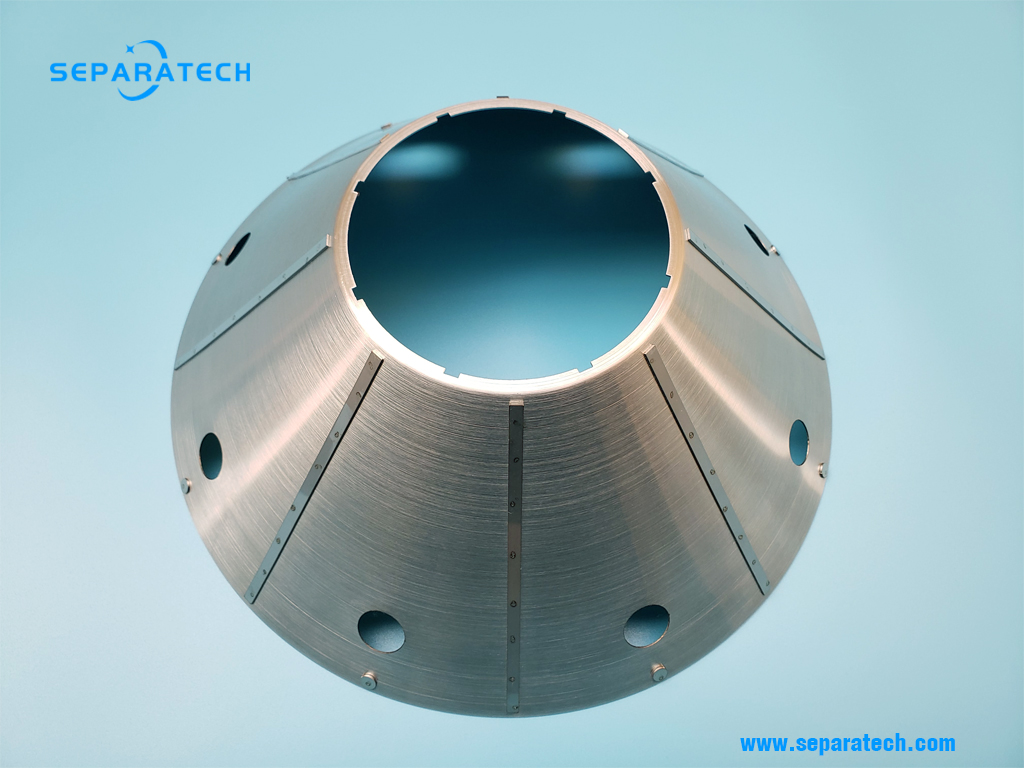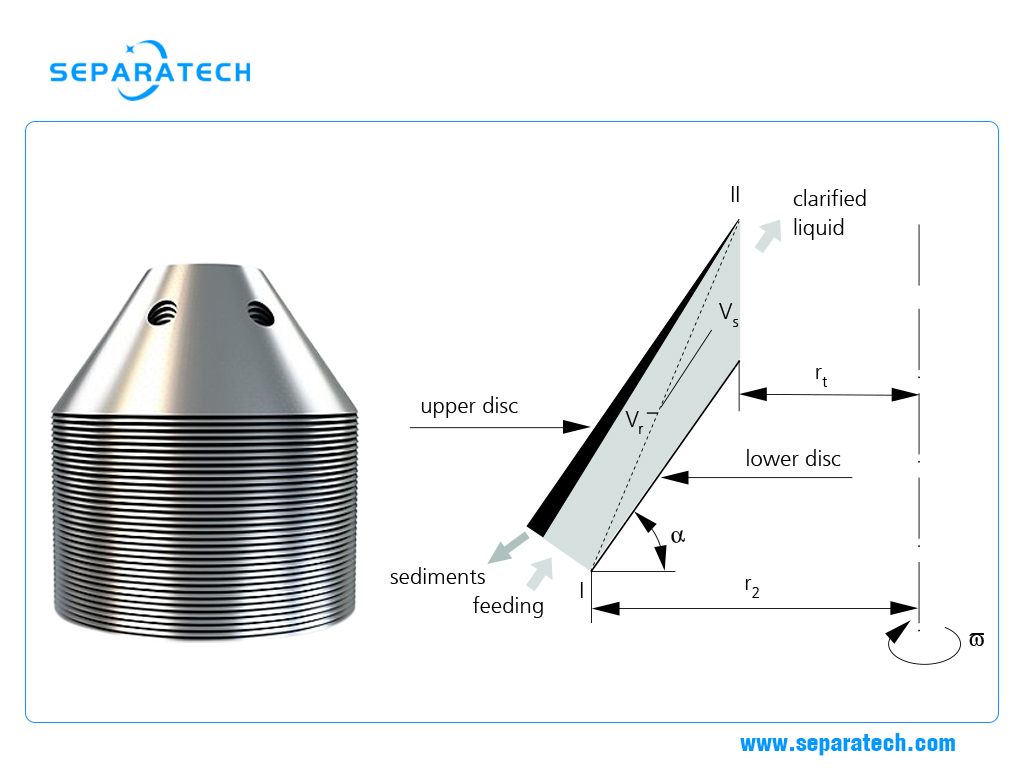Customized Discs for Disc Centrifuge
Customized discs from SEPARATECH for all brands of high-speed disc stack centrifuges. Disc stack plays a critical role in the bowl during centrifugation.
The disc is one of criticle parts of disc stack centrifuge, disc quality, such as machining accuracy, surface roughness, etc., affects the centrifugal separation effect directly. SEPARATECH team has a deep understanding of discs and the key control points in their production, thanks to decades of experience.

What is a disc for a disc stack centrifuge ?
A set of conical discs/plates that are vertically stacked is the disc stack in a disc stack centrifuge. Generally, there is a large of vertical pile of thin conical disks, which are arranged in the manner of one on the top of another. Each disc has thin metal ribs attached to it, and these ribs act as vertical spacers creating a space between the discs.
What does the disc do in the bowl ?

A solids particle is considered to have been separated when it has reached the lower surface of the upper disc. The liquid flow is weak at this point. The particle is no longer captured by the flow, and instead it slides towards the periphery of the disc under the influence of centrifugal force.
It leaves the separating chamber at the end of the upper disc. Along the separating line, the smallest particle capable of being separated is guaranteed to be removed. therefore, solids particles removed out from the liquid phase during centrifugation.
How are discs made ?
manufacturing process of disc:
Raw stainless steel plate → cutting into round discs → spinning →cutting edge → punching hole at small end → surface polishing → opening distribution holes → welding rib or spacer
The quality of original stainless-steel plate is directly related to the quality of the final disc, such as durability, reliability, etc. Therefore, we use steel plates from well-known brands only. In the cutting process of the original stainless-steel plate, high-power laser cutting is used, which is accurate and efficient. Normal temperature spinning is the key point in the whole manufacturing process. The use of CNC spinning machine ensures that the spinning slope is round and smooth. Then, with the cooperation of the custom mold, the small end of the disc is punched and opened, so that the disc can be nested on the distributor. In the next step of cutting the edge of the large tapered end, the use of special fixtures ensures the excellent coaxiality of the outer circle of the large diameter of the disc, which is beneficial to reduce the vibration level of the entire bowl at high speed. The CNC polishing machine can automatically complete the polishing of the inner and outer surfaces of the disc under the control of the computer program. At the same time, according to the needs of the processing technology of the disc centrifuge, the disc can be electropolished to make its surface finish Ra < 0.5 to meet the relevant GMP requirements. After the polishing is completed, open the distribution hole on the tapered surface of the disc. In some disc separator designs, the distribution hole on the disc is sometimes just a semi-circular notch. Spot welding is another key step in the disc manufacturing process. It is necessary to ensure that the rib or the spacer is firmly attached to the disc conical surface, and to reduce the gap between the spacer and the conical surface as much as possible, to ensure the bowl can be cleaned quickly and thoroughly during CIP process.
What material for disc ?
Normally, the conical plate and the ribs are made of the same material, e.g.:
EN 1.4301 UNS 30400
EN 1.4404 UNS S31603
EN 1.4539 UNS N08904
The main function of the disc stack
The purpose of the disc stack in the disc stack centrifuge is to drastically reduce the settling distance for the solids in the fluid mix. The reduction of this distance allows the solid particles to settle quickly, imparting a high separation efficiency to the centrifuge. Additionally, the discs separate the liquid column in the bowl into thin layers in the inter-disc space. The rotating discs can accelerate the incoming, non-rotating liquid subjecting it to the high centrifugal force, which is the critical aspect of centrifugal separation.